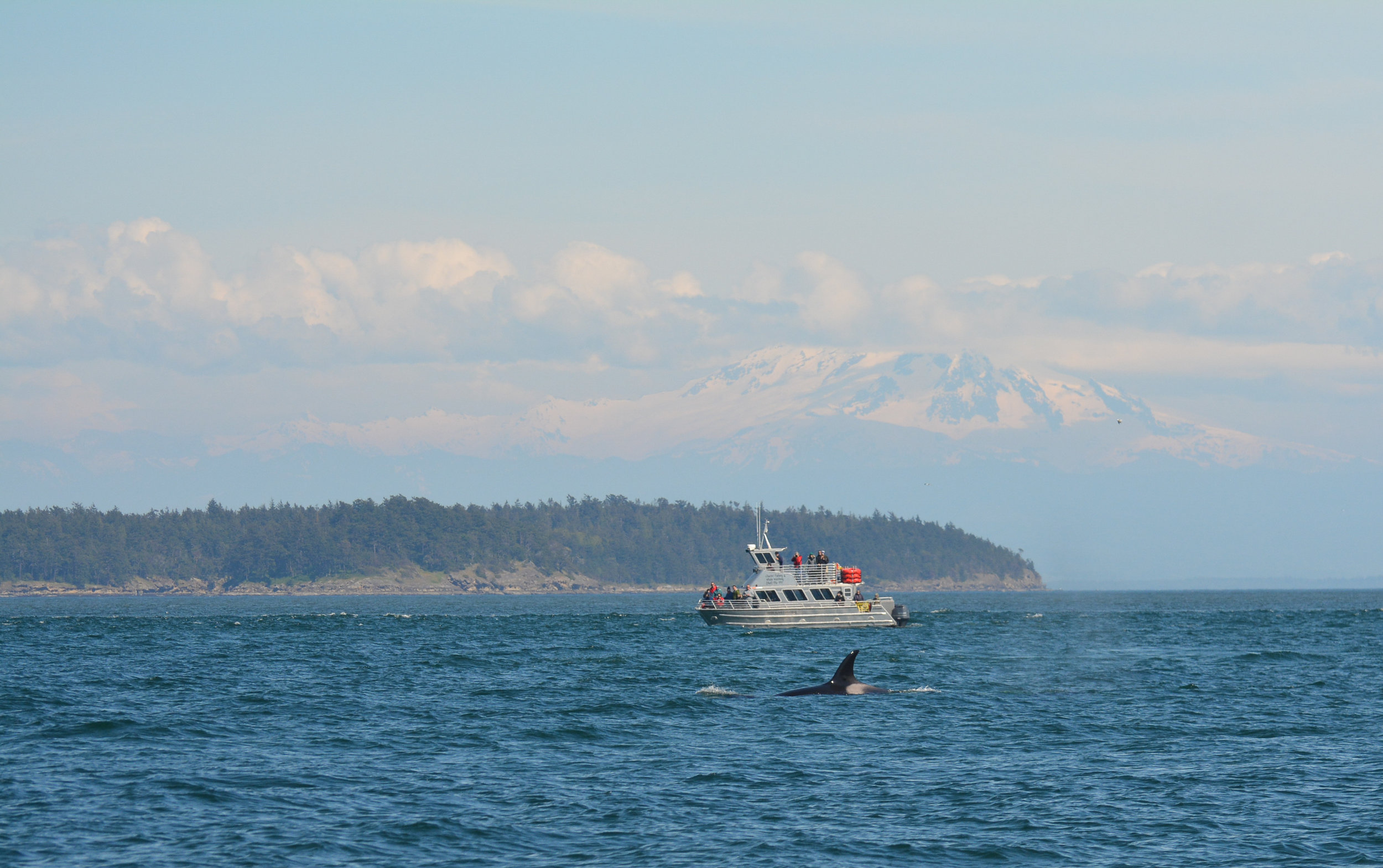May 5, 2018 - T90's and T2B in Boundary Pass
May 5th, 2018
An orca breaking the surface on a beautiful Saturday afternoon. Photo by James Clyburn
We've had amazing weather all week with lots of whales to be seen, and Saturday, May 5th was no exception. We hung out with the T90's, which includes family members "Eagle", "Piglet", and "Tigger". They were traveling with a lone female, T2B "Pedder", who is often seen traveling with the T60's rather than the T90's.
Whales with a mountain backdrop - does it get more British Columbia than this?? Photo by James Clyburn
Pedder was born in 1979 and the mother of the T90's, Eagle, was born in 1980. These two mature females were leading the rest of the pod around and foraging together. Interesting to wonder why Pedder chooses to travel with the whales that she does, and what the others must think of a lone female tagging along.
T2B, a lone female named Pedder, was traveling with the T90's on May 5th. Photo by James Clyburn
Female killer whales, like humans, go through menopause in their late 40s/50s, but still continue to be a matriarchal figure until they die. The oldest female of the pod will usually guide the rest of the pod, and likely make the decisions on where to best search for food.
We identify individual orcas by looking at the shape of their fins and the scarring on their saddle patches (the white area behind the fin). Photo by James Clyburn
Eagle has taught both Piglet and Tigger all of their learned behaviours - from the basics of how to breathe, swim, and communicate, as well as more complex behaviours like attacking prey. If there are young whales in the pod when we witness a seal kill, the kill will usually take a bit longer so that the kids can partake and 'learn the ropes'.
A young whale breaks through the surface to catch a breath. Photo by James Clyburn







